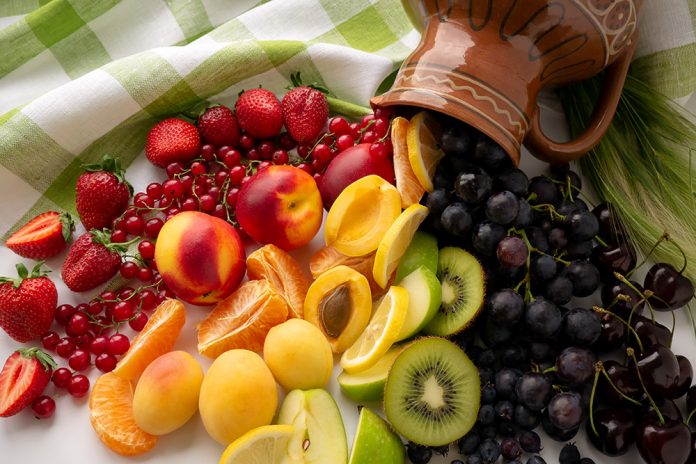This post is also available in: English हिन्दी (Hindi) বাংলা (Bengali)
We must ensure that our children eat different coloured fruits and vegetables.
This is because different coloured fruits and vegetables contain different nutrients. And when they eat a mix and match of colours, children get all the nutrients they need.
To make it easy for parents to feed children all the nutrients that they need – doctors often say – “Just eat a Rainbow”.
What are the colours children should eat?
Children should eat vegetables and fruits that are Violet, Indigo (dark blue), Green, Yellow, Orange, Red and White every day if possible.
What is the importance of each colour in the diet and how to eat them?
Violet
The violet color in fruits and vegetables comes from anthocyanins which are phytonutrients that have antioxidant and anti-inflammatory properties.
A dose of violet in the diet can improve immunity and reduce inflammation.
I am sharing the recipe of Power Packed Purple Cabbage Stir Fry to bring the color violet to your plate.
Indigo and blue
The blue color in fruits is due to the presence of the phytonutrient Anthocyanin which has DNA protective effect.
To add blue to your plate I am sharing the recipe of the dessert Jamun Yoghurt Parfait.
Jamun in addition to Anthocyanin also has Resveratrol which is a powerful antioxidant that protects against organ ageing.
Green
Vegetables that are dark green are rich in minerals like Iron, Calcium, Potassium and Magnesium. They also provide Vitamins like Vitamin K, Vitamin C, vitamin E, and some B Vitamins.
Because of the sheer number of Vitamins and minerals that greens bring in, it is important to eat greens every day.
To introduce green into your plate I am sharing the recipe of Supreme Green Spinach Cutlet.
Yellow
Yellow fruits get their colour because of Flavonoids and Lycopene which are antioxidants and have anti-inflammatory properties. They also have Beta Carotene which turns into Vitamin A in the body. And they are usually also good sources of Vitamin C. These two vitamins increase immunity.
I am sharing the recipe of Pineapple Pudding to add the colour yellow to your plate.
Orange
Vegetables get their orange colour from the pigment Carotenoid.
Carotenoids turn into Vitamin A in the body. Vitamin A is important for the health of the immune system and the lungs. It is also important for good skin, good vision and overall growth.
I am sharing the recipe of All Orange Pumpkin Soup to add the colour orange to your diet.
Red
Many Phytonutrients like Anthocyanin and Lycopene give red fruits and vegetables like tomatoes and strawberries their color. These are wonderful antioxidants.
However, to add red to your plate I have chosen beetroot. Beetroot is red because of the pigment Betalain which has anti-inflammatory properties and is also an antioxidant. Betalains support liver function and help in detoxification.
White
To add white to your plate I am sharing the recipe of the Smashing White Banana Apple Mash.
This gives your baby an array of essential Vitamins and minerals in a few tasty bites. The Vitamins are Vitamin A, Vitamin B, Vitamin C, Vitamin E and Vitamin K. It also has minerals like Calcium and Potassium.
Start introducing your baby to different coloured fruits and vegetables early for them to accept fruits and veggies into their diet enthusiastically.
By
Dr. Debmita Dutta MBBS, MD

Dr. Debmita Dutta is a practicing doctor, a parenting consultant and the founder of the website WPA whatparentsask.com – She is based in Bangalore and conducts online and offline Parenting workshops at schools and corporate organizations. She also conducts online and offline prenatal classes for expecting parents and infant care classes for new parents.
This post is also available in: English हिन्दी (Hindi) বাংলা (Bengali)










